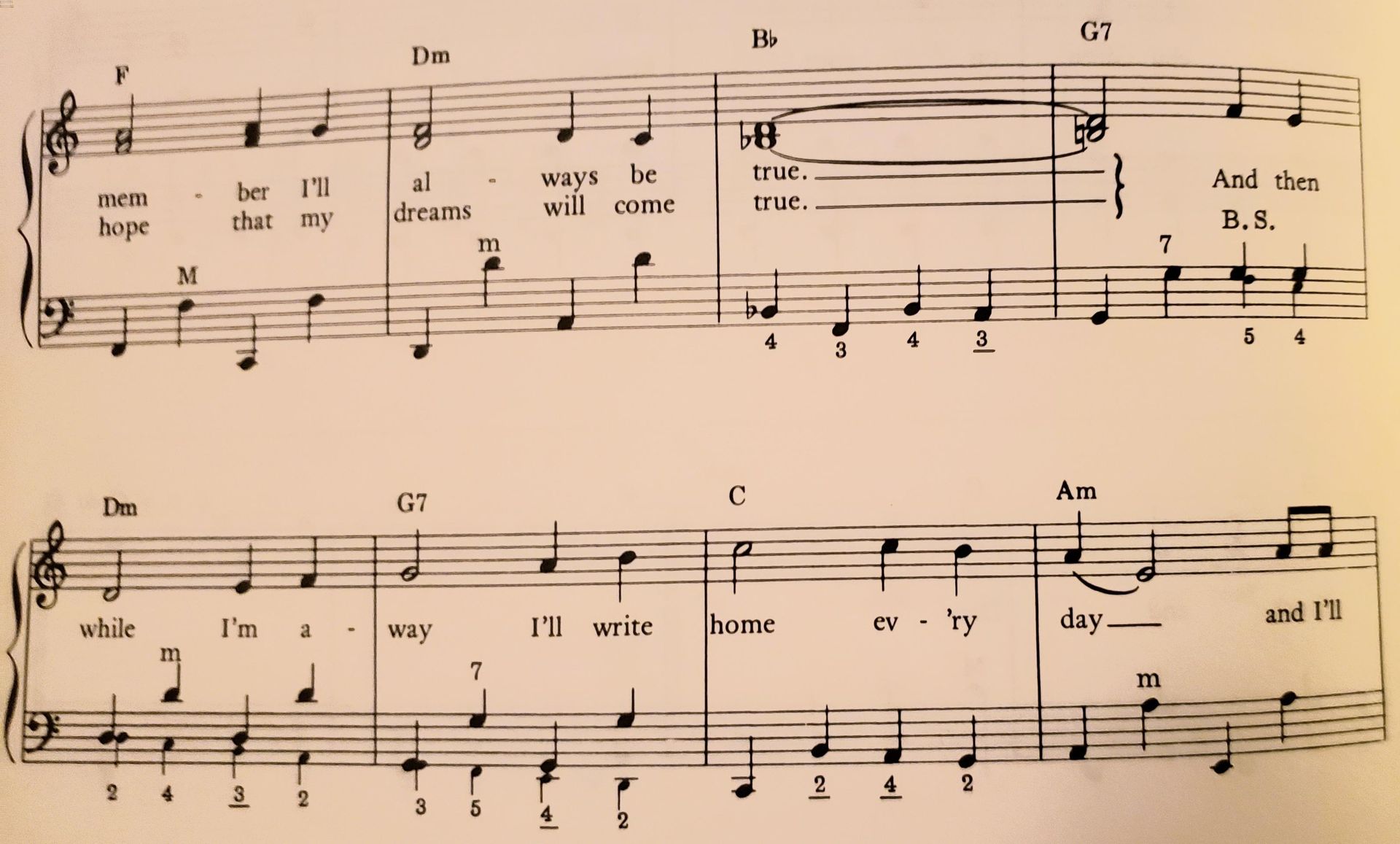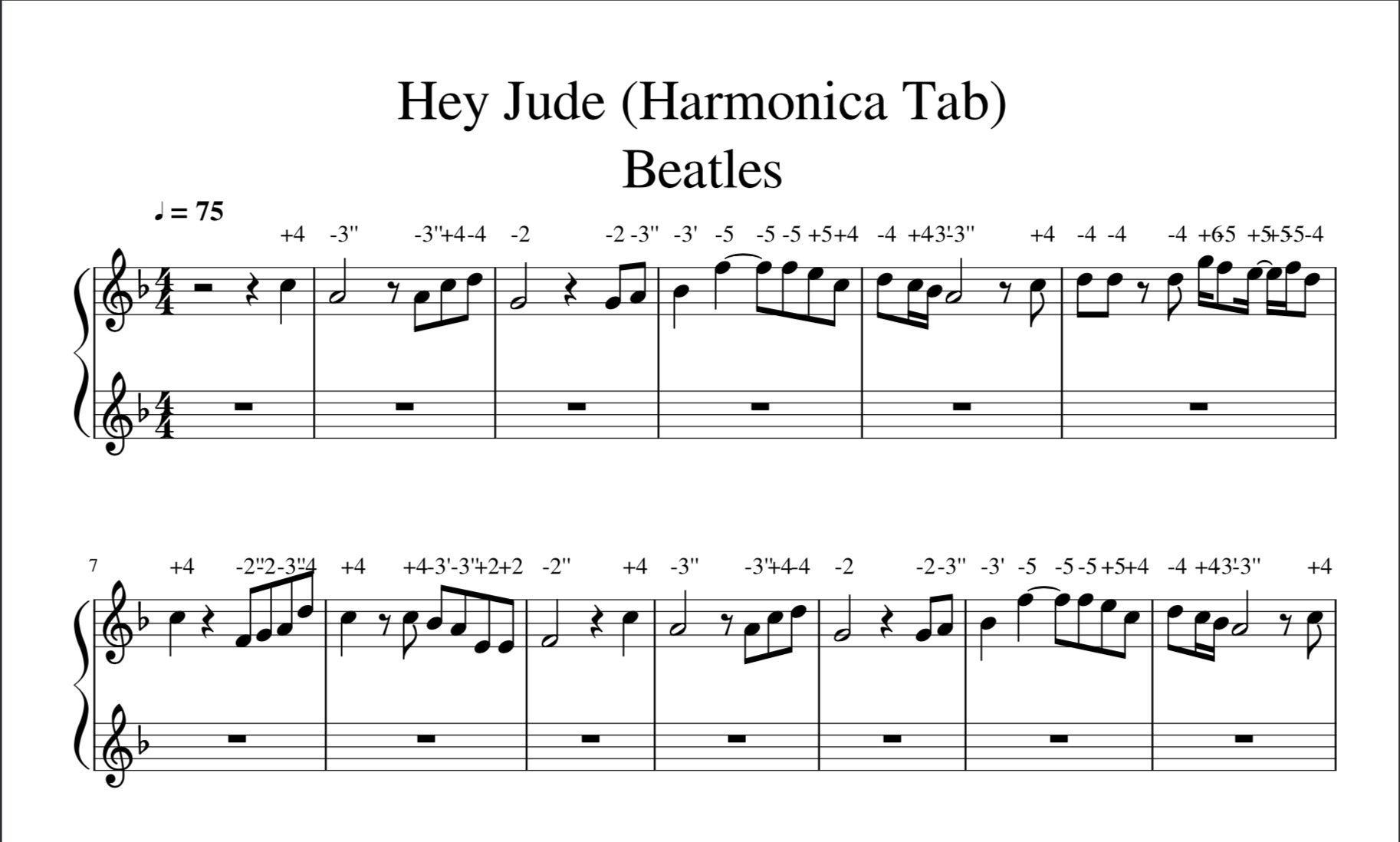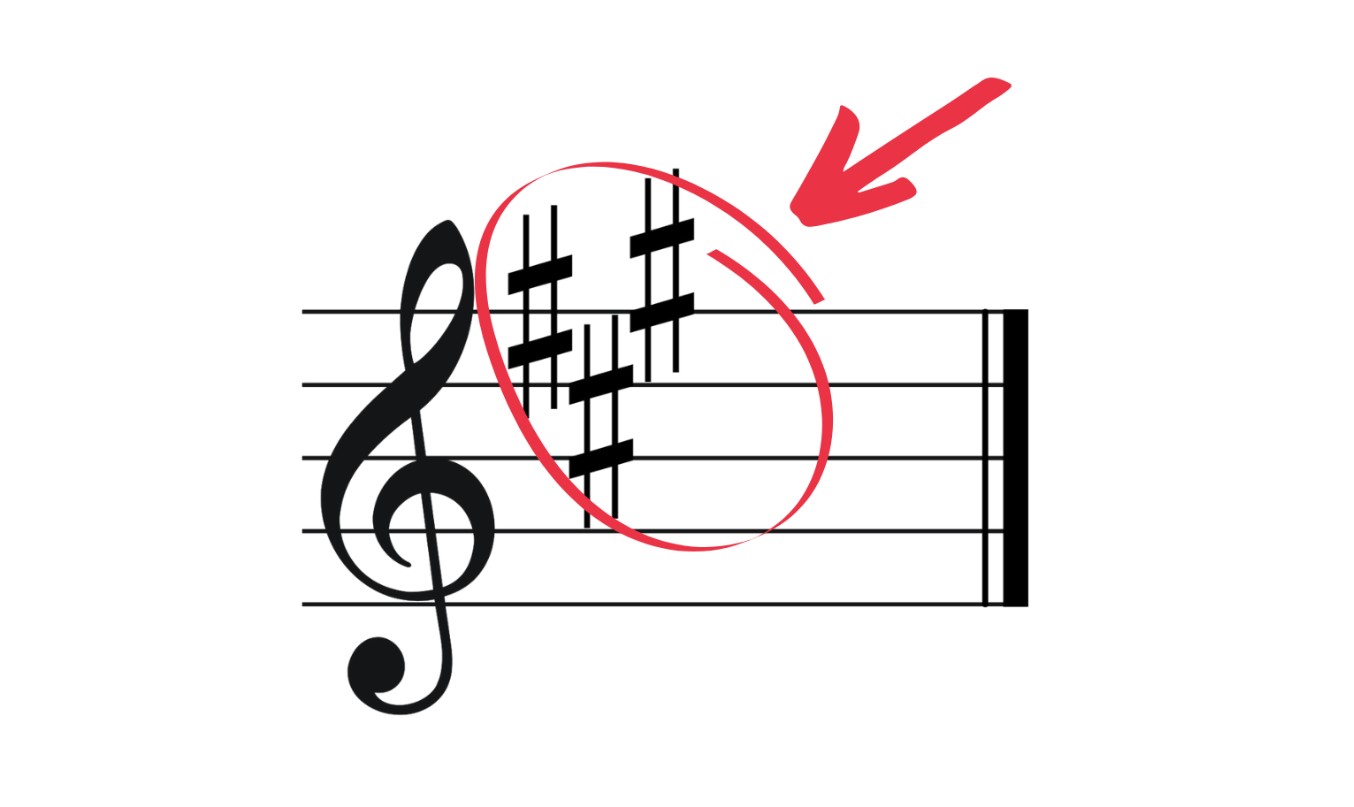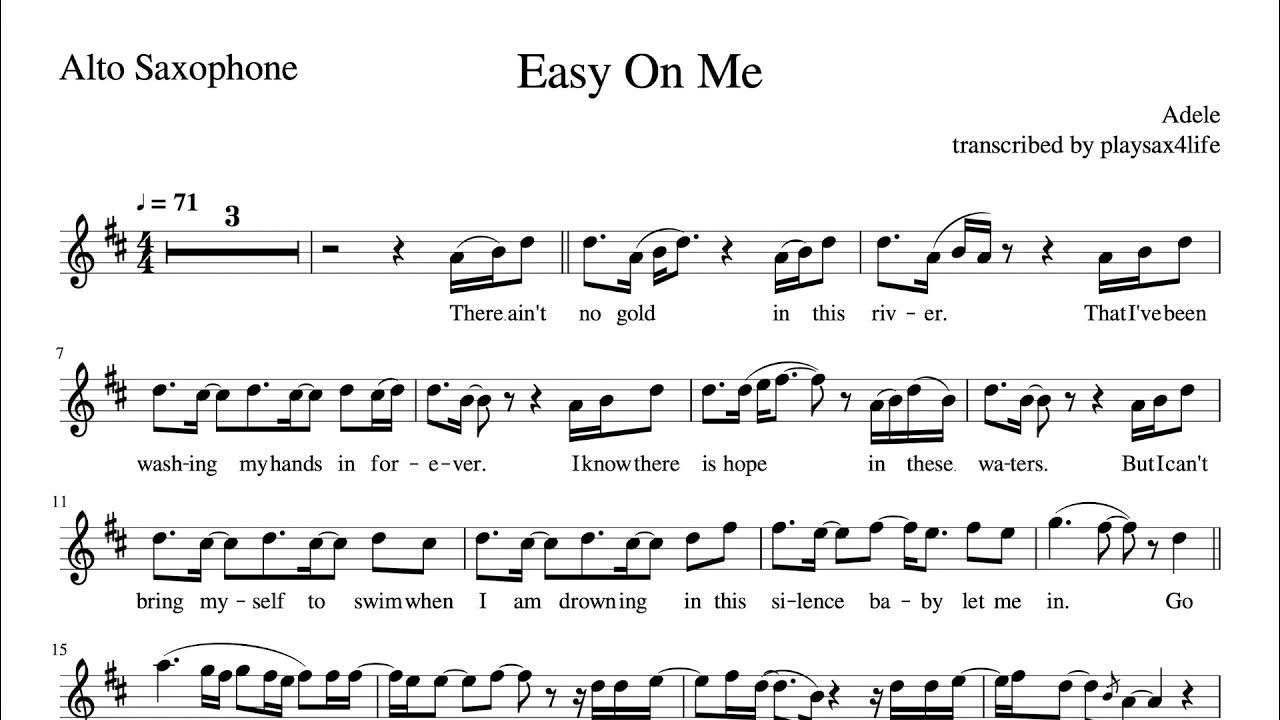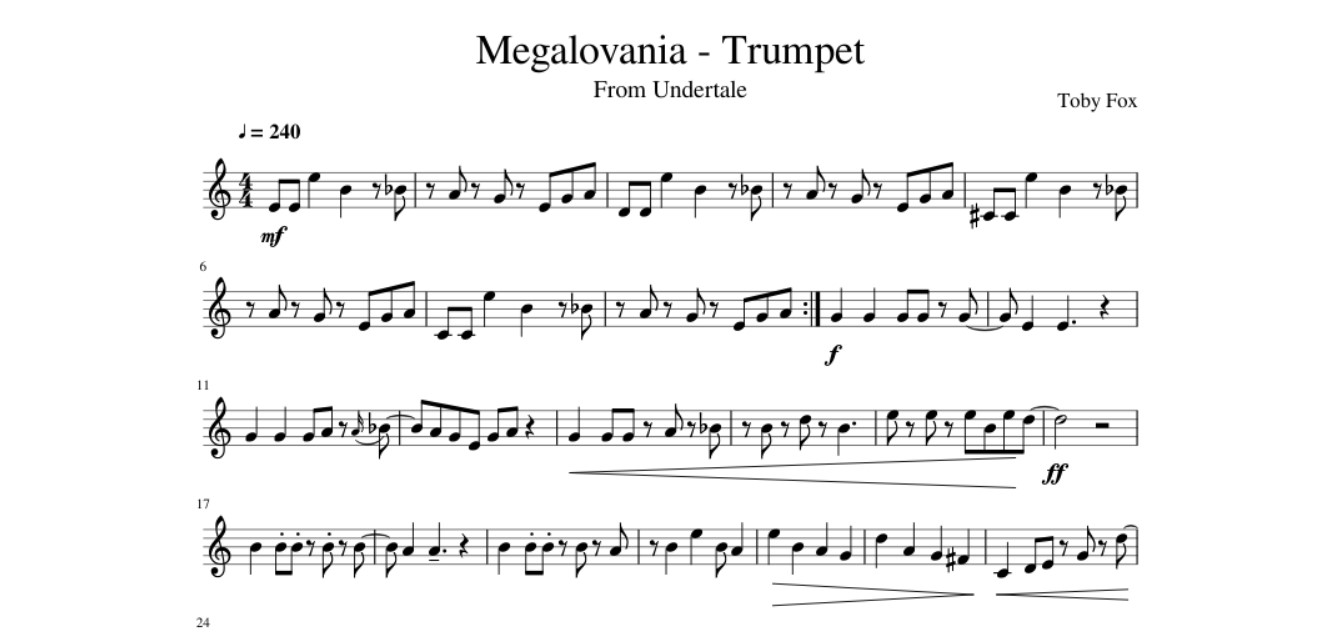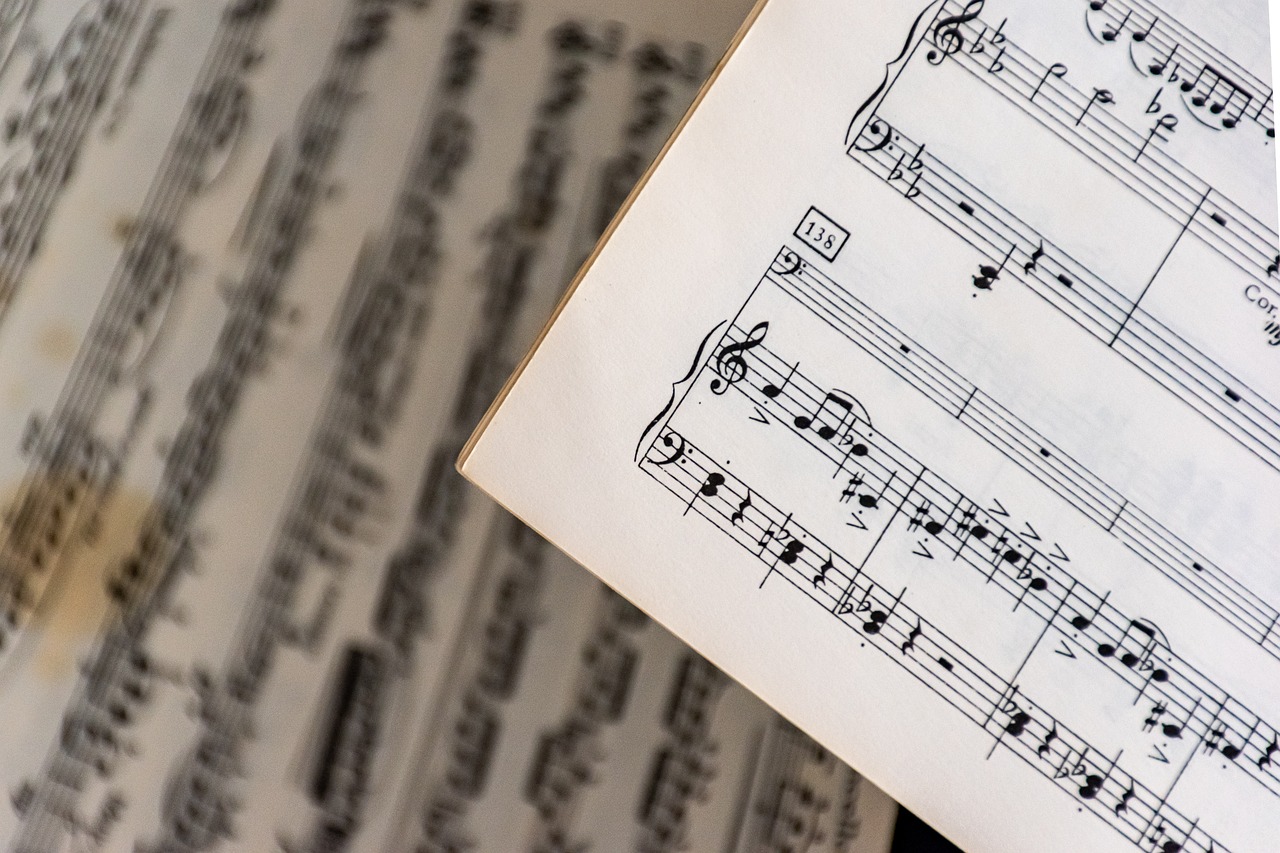Home>Production & Technology>Sheet Music>How To Read Guzheng Sheet Music
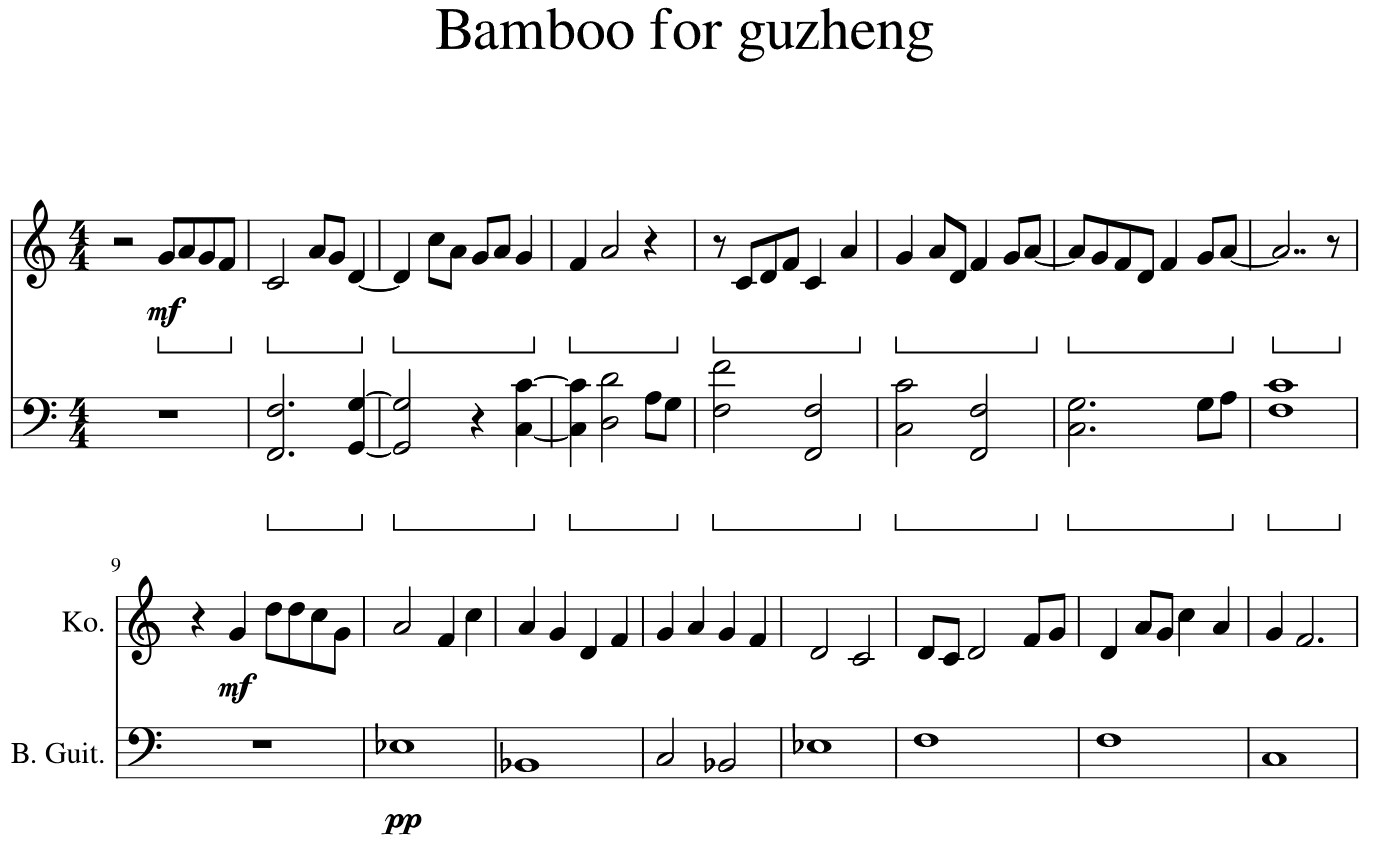

Sheet Music
How To Read Guzheng Sheet Music
Modified: January 22, 2024
Learn how to read sheet music for the Guzheng instrument with our comprehensive guide. Improve your playing skills and master complex compositions.
(Many of the links in this article redirect to a specific reviewed product. Your purchase of these products through affiliate links helps to generate commission for AudioLover.com, at no extra cost. Learn more)
Table of Contents
- Introduction
- Understanding the Basics of Guzheng Sheet Music
- Recognizing the Musical Notation Symbols
- Interpreting Rhythms and Timing
- Mastering the Finger Placements
- Reading Chord Progressions and Harmonies
- Applying Dynamics and Articulations
- Analyzing Guzheng Sheet Music Examples
- Tips and Techniques for Reading Guzheng Sheet Music
- Conclusion
Introduction
Sheet music is a crucial tool for musicians, providing a visual representation of the music they are playing. For those who are passionate about the guzheng, a traditional Chinese plucked instrument, understanding how to read guzheng sheet music is essential. With its rich history and unique musical structure, the guzheng offers a captivating sound that has mesmerized audiences for centuries.
In this article, we will explore the fundamentals of guzheng sheet music and provide valuable insights on how to decipher its notation system. Whether you are a beginner or an experienced guzheng player looking to enhance your skillset, this guide will equip you with the necessary knowledge to read and interpret sheet music with confidence.
By grasping the basics of guzheng sheet music, you will unlock a world of opportunities to explore and perform a vast repertoire of traditional and contemporary compositions. So, let’s dive in and unravel the mysteries of guzheng sheet music together!
Understanding the Basics of Guzheng Sheet Music
Guzheng sheet music is typically written using a combination of musical notation symbols, Chinese characters, and numbered notation system. To effectively read and understand guzheng sheet music, it is important to familiarize yourself with these elements.
The musical notation symbols used in guzheng sheet music are similar to those used in Western music notation. These symbols represent different aspects of the music, such as pitch, duration, and dynamics. Some commonly used symbols in guzheng sheet music include:
- Treble Clef: Indicates the range of pitches to be played on the guzheng.
- Notes: Represent the pitch and duration of the sounds to be played. They are placed on the lines and spaces of the staff.
- Rests: Indicate periods of silence or breaks in the music. They are also placed on the lines and spaces of the staff.
- Accidentals: Alter the pitch of a note, either raising or lowering it by a half-step.
- Dynamics Markings: Indicate the volume or intensity of the music, such as p (piano, soft) and f (forte, loud).
Chinese characters are also used in guzheng sheet music to indicate specific techniques or instructions for playing. These characters provide additional information about the nuances and expressions required to bring the music to life.
Another important aspect of guzheng sheet music is the numbered notation system. This system assigns a unique number to each finger of both hands, allowing players to easily identify the finger placements required to play a particular note or sequence of notes. By understanding and practicing the numbered notation system, players can quickly navigate through complex passages and improve their overall accuracy and speed.
Overall, understanding the basics of guzheng sheet music involves familiarizing yourself with the musical notation symbols, Chinese characters, and numbered notation system. Mastering these elements will provide you with a solid foundation for interpreting and performing guzheng sheet music with confidence and precision.
Recognizing the Musical Notation Symbols
When it comes to reading guzheng sheet music, it is important to be able to recognize and understand the different musical notation symbols used. These symbols provide valuable information about pitch, duration, and dynamics, allowing players to accurately interpret the music.
Here are some of the key musical notation symbols commonly found in guzheng sheet music:
- Treble Clef: The treble clef symbol, also known as the G clef, is used to indicate the range of pitches to be played on the guzheng. It is placed at the beginning of the staff and provides a reference point for reading the notes.
- Notes: Notes are the fundamental building blocks of music notation. They represent the pitch and duration of the sounds to be played. In guzheng sheet music, notes are placed on the lines and spaces of the staff. The position of the note on the staff indicates the pitch, while the shape of the note indicates the duration.
- Rests: Rests indicate periods of silence or breaks in the music. They are also placed on the lines and spaces of the staff. Rests come in different durations, such as whole rests, half rests, and quarter rests, among others.
- Accidentals: Accidentals are symbols that alter the pitch of a note. The two most common accidentals used in guzheng sheet music are the sharp (#) and flat (b) symbols. A sharp raises the pitch of a note by a half-step, while a flat lowers the pitch by a half-step.
- Dynamics Markings: Dynamics markings provide information about the volume or intensity of the music. Common dynamic markings include p (piano, soft), f (forte, loud), and mf (mezzo forte, moderately loud). These markings help in bringing expressiveness and dynamism to the music.
Familiarizing yourself with these musical notation symbols will greatly enhance your ability to read and interpret guzheng sheet music. As you practice, you will become more adept at identifying these symbols and understanding their significance in the context of the music you are playing.
Remember, reading sheet music is a skill that improves over time, so be patient and give yourself plenty of opportunities to practice and refine your understanding of the musical notation symbols used in guzheng sheet music.
Interpreting Rhythms and Timing
Rhythm is an essential element of music, and understanding how to interpret rhythms and timing in guzheng sheet music is crucial for accurate and expressive playing. Rhythm refers to the duration and pattern of musical sounds, and it provides the structure and pulse of a piece of music.
When reading guzheng sheet music, you will come across various rhythm notations that indicate the duration of each note and rest. Here are some common rhythm notations you may encounter:
- Note Values: Note values represent the duration of a note. In guzheng sheet music, common note values include whole notes, half notes, quarter notes, eighth notes, and sixteenth notes. Each note value has a specific duration, and understanding how these note values are represented on the staff will help you play the music with the correct timing.
- Time Signatures: Time signatures provide information about the organization of beats in a piece of music. The most common time signature in guzheng sheet music is 4/4, which means there are four beats per measure. Other time signatures, such as 3/4 or 6/8, may also be encountered. Understanding the time signature is crucial for maintaining the correct rhythm and timing while playing.
- Rhythmic Patterns: Guzheng sheet music often contains rhythmic patterns that repeat throughout the piece. These patterns may consist of a combination of different note values and rests. Practicing these patterns separately can help you internalize the rhythm and improve your overall sense of timing.
Additionally, it is important to pay attention to any syncopated rhythms or dotted notes that may be present in the guzheng sheet music. Syncopation occurs when the emphasis in the music falls on off-beats or weak beats. Dotted notes, indicated by a dot placed next to a note, increase the duration of the note by half. These rhythmic elements add complexity and interest to the music and require careful interpretation and execution.
To develop your skills in interpreting rhythms and timing in guzheng sheet music, practice playing with a metronome or rhythmically challenging exercises. Focus on subdividing the beats and maintaining a steady tempo. This will help you improve your rhythm accuracy and develop a strong sense of pulse.
Remember, interpreting rhythms and timing in guzheng sheet music requires both technical accuracy and musical expression. As you become more proficient in reading and understanding rhythms, you will be able to bring the music to life with your own unique interpretation.
Mastering the Finger Placements
One of the key elements in playing the guzheng is mastering the finger placements. Each finger placement on the guzheng corresponds to a specific note or group of notes in the sheet music. Understanding and executing accurate finger placements is essential for playing the correct pitches and producing a melodious sound.
When reading guzheng sheet music, there are several techniques and symbols that indicate the finger placements. Here are some important aspects to consider:
- Numbered Notation: The numbered notation system assigns a unique number to each finger of both hands. This system provides a clear reference for finger placements. The numbers generally range from 1 to 4, with 1 representing the thumb and 4 representing the little finger. Familiarize yourself with this system by practicing exercises and simple melodies that emphasize the finger placements.
- Finger Indications: In guzheng sheet music, you may come across symbols or numbers placed above or below the notes, indicating which finger to use. These indications guide you in placing the correct finger on the corresponding string to produce the desired pitch. Pay close attention to these indications and practice transferring finger placements accurately and efficiently.
- Left Hand and Right Hand Positions: The guzheng requires coordination between the left and right hands. The left hand is responsible for pressing the strings against the bridges, while the right hand plucks the strings. It is important to maintain proper hand positions to ensure smooth movement and accurate finger placements. Regular practice and proper technique will help you develop flexibility and precision in your finger placements.
To master the finger placements, practice playing scales, arpeggios, and exercises that specifically focus on finger movements. Start with slow and deliberate movements, gradually increasing the speed as you become more comfortable. Pay attention to the placement of each finger and the corresponding sound produced. Regular practice will improve muscle memory and finger dexterity, making it easier to navigate through the guzheng sheet music.
Additionally, listening to recordings of guzheng performances and observing experienced players can provide valuable insights into finger placements and techniques. Observe their hand positions and finger movements, and try to emulate their precision and control.
Remember, mastering the finger placements takes time and consistent practice. By dedicating yourself to developing accurate finger placements, you will be able to play the guzheng with confidence and fluidity, bringing out the true essence of the music.
Reading Chord Progressions and Harmonies
Reading chord progressions and harmonies in guzheng sheet music is essential for understanding the underlying structure and harmonic qualities of a piece. Chords are a fundamental aspect of music, providing the foundation and support for melodies, and harmonies add depth and complexity to the overall sound.
Here are some important points to consider when reading chord progressions and harmonies in guzheng sheet music:
- Chord Symbols: In guzheng sheet music, chord symbols are often written above the staff or within the notation. These symbols indicate the specific chords to be played at that moment. They are typically written using Roman numerals to represent the chords in relation to the key of the music. Familiarize yourself with common chord symbols and their corresponding finger placements on the guzheng.
- Chord Inversions: Chord inversions occur when the order of the notes within a chord is changed. In guzheng sheet music, chord inversions are often indicated by numbers or symbols above the chord symbol. These indicate which fingers should be used and the specific order of the notes within the chord. Pay close attention to these indications to accurately execute the chord inversions.
- Harmonic Progressions: Harmonic progressions refer to the sequence of chords within a piece of music. Understanding harmonic progressions helps you anticipate the chord changes and contribute to the overall musical interpretation. Follow the chord symbols in the guzheng sheet music to identify the progression and practice transitioning smoothly between chords.
- Listening for Harmonies: In addition to reading the chord symbols, listening to recordings and performances of guzheng music can help develop your ear for harmonies. Train your ear to identify the relationships between the different notes played simultaneously and how they contribute to the overall sound. This will enhance your ability to interpret and play harmonies accurately.
When practicing chord progressions and harmonies, start by playing each chord individually to establish the finger placement and sound quality. Gradually, begin to transition between the chords, paying attention to smooth transitions and maintaining a consistent rhythm. As you become more comfortable with changing chords, focus on the flow and expression of the harmonies to bring out the intended musical effect.
By reading and understanding chord progressions and harmonies in guzheng sheet music, you will be able to create a fuller and more immersive musical experience, complementing the melodies and enhancing the overall performance.
Applying Dynamics and Articulations
Dynamics and articulations play a crucial role in shaping the expressive qualities of guzheng music. They add depth, contrast, and emotion to the music, creating a captivating and nuanced performance. When reading guzheng sheet music, it is important to pay attention to dynamic markings and articulation symbols to accurately convey the intended musical expression.
Here are some key points to consider when applying dynamics and articulations in guzheng sheet music:
- Dynamic Markings: Dynamic markings indicate the volume or intensity of the music at a particular point. Common dynamic markings include p (piano, soft), f (forte, loud), and crescendo (gradually getting louder) and decrescendo (gradually getting softer). Pay close attention to these markings and adjust your playing accordingly to create the desired dynamic contrast throughout the piece.
- Articulation Symbols: Articulation symbols provide guidance on how each note or phrase should be played. They indicate the manner in which the notes are to be executed, such as legato (smooth and connected), staccato (short and detached), or marcato (accented and emphasized). These symbols can greatly affect the overall character and expression of the music, so be sure to observe and follow them closely.
- Phrasing and Expression: Apart from specific dynamic and articulation markings, it is important to develop a sense of phrasing and expression in your playing. This involves understanding the overall musical structure and highlighting important moments or phrases. Take note of any crescendos, decrescendos, or changes in mood indicated in the guzheng sheet music, and strive to bring out the intended musical expression through your playing.
- Listening for Interpretation: As you explore guzheng music, listen to recordings and performances by experienced players to gain insight into different interpretations and approaches to dynamics and articulations. Study how they emphasize certain passages, create dynamic contrasts, and infuse the music with emotion. Use these recordings as inspiration to develop your own interpretation and style.
When practicing dynamics and articulations, start by isolating specific sections or phrases in the guzheng sheet music and focus on bringing out the intended expression. Experiment with different levels of dynamics, articulations, and phrasing to find the most musically compelling interpretation. Remember to balance these elements with technical accuracy to create a well-rounded and engaging performance.
By effectively applying dynamics and articulations in your guzheng playing, you will elevate the musicality of your performance and bring a unique and expressive touch to the music.
Analyzing Guzheng Sheet Music Examples
Examining and analyzing guzheng sheet music examples is an effective way to deepen your understanding of the instrument and enhance your ability to interpret the music. By closely studying the composition, structure, and elements within a piece, you can gain valuable insights into the intentions of the composer and develop a more nuanced approach to your performance.
When analyzing guzheng sheet music examples, consider the following aspects:
- Key Signature: Take note of the key signature indicated at the beginning of the music. The key signature identifies the tonal center of the piece and provides a reference for understanding the scale and tonal relationships within the composition.
- Tempo and Time Signature: Analyze the tempo and time signature to determine the overall feel and rhythmic structure of the music. The tempo indicates the speed of the music, while the time signature provides information about the organization of beats and measures.
- Melodic Phrases and Motifs: Identify recurring melodic phrases and motifs throughout the sheet music. These musical ideas often contribute to the overall theme or mood of the piece and can guide your interpretation and expression while playing.
- Chord Progressions and Harmonies: Pay attention to the chord progressions and harmonies used in the composition. Analyze how chords move from one to another and the impact they have on the overall tonality and emotional quality of the music.
- Dynamics and Articulations: Look for dynamic markings and articulation symbols that indicate variations in volume, intensity, and playing techniques. Analyzing how these elements are incorporated will help you understand the desired expression and interpret the music more accurately.
As you analyze guzheng sheet music examples, find connections between the different elements and consider how they contribute to the overall structure and narrative of the composition. Reflect on the mood, character, and message of the piece, allowing these insights to inform your interpretation and performance.
It can also be beneficial to listen to recordings of the piece being performed by experienced guzheng players. This will provide additional context and inspiration, allowing you to gain further understanding of how the music can be interpreted and played.
By actively analyzing guzheng sheet music examples, you will develop a deeper appreciation for the craftsmanship and artistry of the music. This understanding will enhance your performance and enable you to bring out the true essence of the composition.
Tips and Techniques for Reading Guzheng Sheet Music
Reading guzheng sheet music can be a challenging yet rewarding endeavor. Here are some tips and techniques to help you improve your skills in reading and interpreting guzheng sheet music:
- Start with the Basics: Begin by familiarizing yourself with the fundamentals of music notation, such as treble clefs, note values, rests, and dynamics. Develop a solid understanding of these elements to build a strong foundation for reading guzheng sheet music.
- Practice Sight-Reading: Set aside dedicated practice time for sight-reading. Choose simple guzheng sheet music pieces and gradually work your way up to more complex compositions. This will improve your ability to quickly recognize and play unfamiliar music.
- Use Finger Guides: For beginners, consider using finger guides that indicate the placement of each finger on the guzheng. This can help you navigate the strings and find the correct pitch, especially when starting out.
- Break it Down: Break down the guzheng sheet music into smaller sections and practice each section separately. This allows you to focus on specific challenging passages and gradually build your mastery of the piece as a whole.
- Listen to Recordings: Listen to recordings of guzheng performances to familiarize yourself with the sound and phrasing of the music. This will help you develop a sense of the musical flow and expression when reading guzheng sheet music.
- Seek Guidance from a Teacher: Consider working with a guzheng teacher who can provide guidance and feedback on your sheet music reading skills. They can help you develop proper technique, offer insights into interpretation, and help you overcome any challenges you may encounter.
- Use Visual Aids: Utilize visual aids, such as colored highlighters or sticky notes, to mark important sections, finger placements, or dynamic markings in the guzheng sheet music. This can make it easier to quickly reference and navigate through the score while playing.
- Practice with a Metronome: Use a metronome to develop a strong sense of timing and rhythm. This will help you maintain a steady tempo while reading and playing guzheng sheet music, improving your overall accuracy and musicality.
- Embrace Patience and Persistence: Reading guzheng sheet music is a skill that takes time and consistent practice to develop. Be patient with yourself, stay persistent, and celebrate small victories along the way. With dedication and perseverance, your sheet music reading skills will improve over time.
Remember, reading guzheng sheet music is an ongoing journey of learning and growth. Continuously challenge yourself with new pieces and techniques, and never stop exploring the rich and beautiful world of guzheng music.
Conclusion
Mastering the skill of reading and interpreting guzheng sheet music is an invaluable asset for any guzheng player. It opens up a world of possibilities to explore a diverse repertoire and express yourself through this beautiful instrument.
We have explored the basics of guzheng sheet music, including understanding notation symbols, interpreting rhythms, mastering finger placements, reading chord progressions, and applying dynamics and articulations. By honing these skills, you will be equipped with the tools necessary to bring the music to life and deliver engaging performances.
Remember, reading guzheng sheet music is a journey that requires time, patience, and consistent practice. Take advantage of the resources available to you, such as recordings, guzheng teachers, and visual aids, to enhance your understanding and technical abilities. Embrace challenges, celebrate small victories, and never stop learning.
As you delve into guzheng sheet music, immerse yourself in the rich history and cultural significance of this ancient instrument. Explore different genres, experiment with interpretations, and have fun along the way. Music is a language that transcends boundaries, and by reading guzheng sheet music, you are becoming a part of a tradition that stretches back centuries.
So, pick up your guzheng, lay out the sheet music, and let your fingers dance across the strings. With each note you play, you are creating a beautiful tapestry of sound, preserving and extending the legacy of this remarkable instrument.

